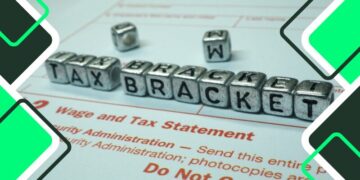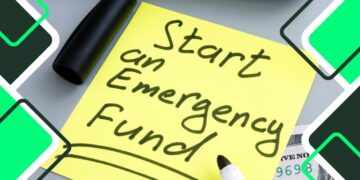How to Handle Credit Card Debt in Australia

Credit card debt is a worrying issue for many Australians, as high interest rates, along with excessive spending, can lead to a state of distress. While credit cards are excellent spending tools, they can be a liability if not handled with care. The most efficient way to deal with credit card debt is to fully understand the challenges involved.
In addition, implementing effective repayment options and utilizing the financial resources provided to Australians is essential. This guide will look at in-depth techniques to manage, reduce, and eliminate credit card debt so that you can take charge of your finances and work towards long-term security.
Understanding Credit Card Debt in Australia
Credit cards are easily available in Australia, but many users fall into the debt trap because of high interest rates, fees, and impulse buying. Therefore, without putting in the necessary effort, the consequences of credit card debt can spiral out of control.
This can mean paying higher interest fees, lowering your credit score, and being in a constant state of financial anxiety. Moreover, missing payments can affect your credit history, which in turn makes acquiring loans, mortgages, and other financial products more difficult. It is important to understand how credit card debt affects you so that you may take charge of your finances.
Strategies To Reduce Credit Card Debt
Finding the right approach to managing and getting rid of your credit card debt takes strategy as well as strong financial discipline. Maintaining the right approach can make it easier for you to manage your debt and avoid financial difficulties along the way.
Make a Debt Repayment Plan
What needs to be done here is to create an effective plan that targets your credit card debt. This involves preparing a list of all your credit cards, indicating their balances, interest rates, and minimum payments. Making this list will help you figure out the most strategic order for tackling your debt.
There are two commonly used approaches to payment plans:
- The Snowball Method: In this strategy, you focus on paying off your smallest debt first. Meanwhile, continue making minimum payments on your other debts. Once the smallest debt is cleared, move on to the next smallest. This builds momentum and increases motivation as you see quick progress.
- The Avalanche Method: This strategy targets the debt with the highest interest rate first, regardless of the balance. By focusing on the most costly debt, you save more on interest over time, which helps reduce overall costs in the long run.
Pick a method that you believe you can adhere to, and make sure you set up a schedule to pay off your debt promptly.
Utilize Balance Transfer Credit Cards
A balance transfer credit card enables you to switch existing credit card debt to another card with 0% interest for a specific period, usually between 6 to 24 months. This allows you to pay off your debt faster without having to worry about accruing more interest.
Be aware of:
- Balance transfer fees: Certain banks impose a fee for transferring your balance, typically ranging from 1–3% of the balance being transferred.
- Interest rates after the promotional period: Once the promotional period is over, any outstanding balance may be subject to high interest rates.
- Strict payment schedule: To avoid paying high fees, you should clear the balance before the promotional period ends.
Manage reductions on interest incurred
One of the biggest challenges experienced with credit cards is the high interest rates. For this problem, consider the following options that can ease the burden:
- Ask for a lower interest rate: Call your bank or credit card service provider and ask for a lower interest rate. If your repayment record is good, many banks are ready to negotiate or discuss better terms.
- Switch to a new card with a lower interest rate: Transfer your balance to a new card with a lower interest rate to minimize your long-term expenses.
- Pay more than the minimum payment: It is not ideal to only pay the minimum amount, as it increases the overall cost of your debt. Always try to exceed the minimum payment to bring your balance down to zero faster.
Set Up Scheduled Payments to Prevent Paying Late Fees
Missed payments not only attract late payment fees but also negatively affect your credit score. By setting up automatic payments, you ensure that no payments are missed on your part and that no unnecessary fees are incurred. Most banks provide the opportunity to set up payments for the minimum required amount, the full amount, or a fixed amount to be paid every month.
Getting a Personal Loan to Consolidate your Debt
If you have several credit card debts, consolidating them under a personal loan can make your repayments much easier. Using credit cards usually incurs higher interest rates compared to personal loans, and personal loans come with easy-to-manage repayment plans.
Some of the advantages of consolidating debt are:
- A single loan means lower interest rates are applied to the overall debt.
- Fixed monthly payments make it much easier to plan finances effectively.
- Instead of juggling credit cards, managing a single debt is much more convenient.
Remember to compare lenders before applying for a personal loan to find the most suitable terms and lowest fees.
Eliminate Unneeded Spending and Add Pay Towards the Debts
One of the best ways to pay off debts is by eliminating unneeded spending and using those funds toward the debt instead. Some suggestions:
- Limit takeaway or just dine out on special occasions.
- Cancel subscriptions that are no longer used.
- Restrict spending on impulse purchases by following a shopping list.
- Use cashback rewards at every opportunity.
- Making small spending changes can add up to significant savings that can easily help you pay off the debt much more rapidly.
Look For Financial Service Providers
When you feel like your debts are overwhelming, you should consider seeking help from professionals. In Australia, free financial services can be found on the following websites:
Professional financial counselors can assist you in formulating a unique debt management plan that will work best for your needs. They can also help you negotiate with creditors or even apply for hardship assistance programs.
Australian Debit Cards
Credit cards offer financial flexibility, but with that comes risk if they are not used sensibly. Debit cards, however, are a better option for day-to-day expenses without the risk of debt.
Most debit cards in Australia are tied directly to a bank account, meaning you can only spend what you have. This also avoids interest charges and fosters responsible spending.
There are also a range of debit cards offered by several banks in Australia, providing features like fee-free transactions, cashback rewards, fraud protection, and more.
Avoiding New Credit Card Debt in The Future
After paying off your credit card debts, there are constant new changes that you need to get used to so that you do not get plunged back into debt again. Here are some simple tips to adopt:
- Use a debit card for daily expenses instead of a credit card.
- Pay off your entire credit card balance each month so that you are never charged interest.
- Create a realistic spending budget and reduce your expenses.
- Set aside an emergency fund to cover unexpected expenses.
Conclusion
Managing credit card debt is a challenge. It requires timely payments, a lot of discipline, focus, and patience. You have the option to follow the strategies and financial plans mentioned in this guide and gain control over your finances, get rid of debt, and secure your financial future!
Always remember that careful and responsible use of credit cards and good planning will enable you to stay in good financial health.
Related content

Understanding tax brackets and how to minimise your tax burden

The Risks and Rewards of Investing in ETFs

10 Smart Investments for Young Australians in 2025

Emergency Fund: How to Start and What to Do

How to Take Advantage of Tax Benefits in Australia
